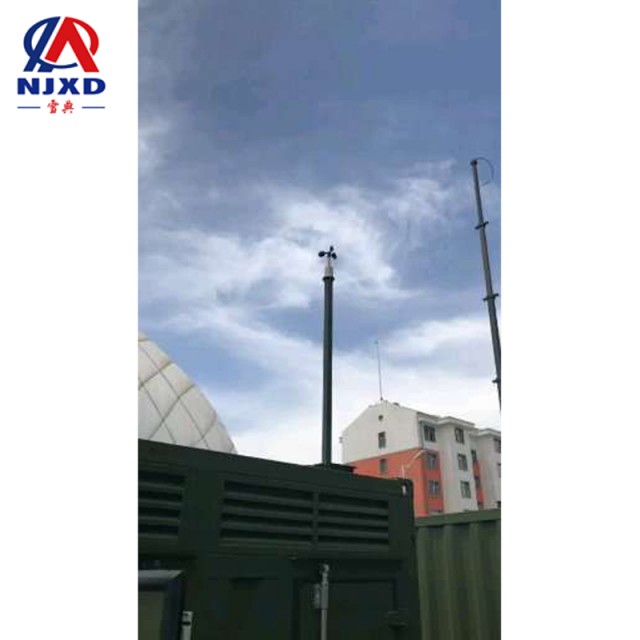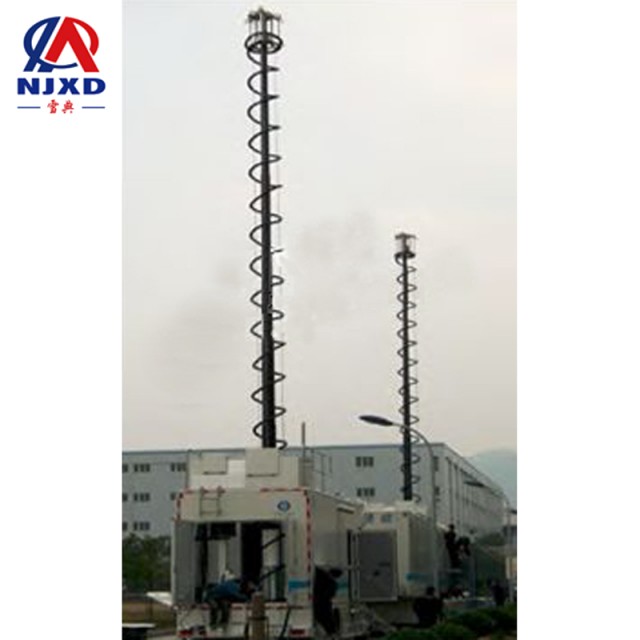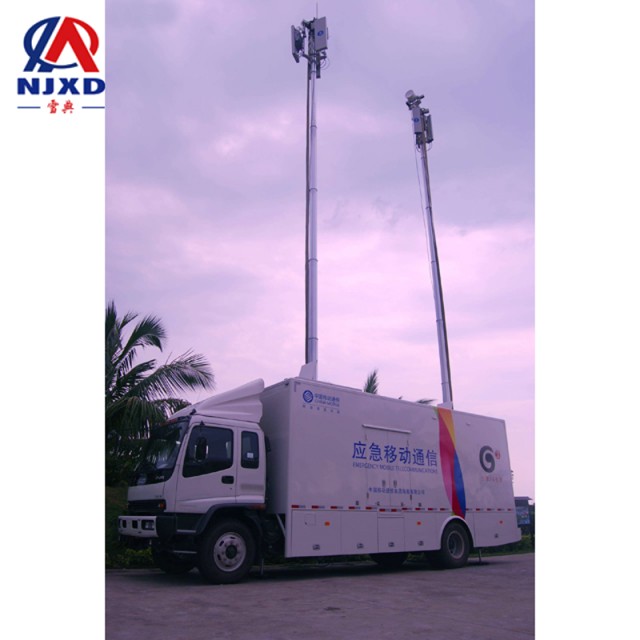NEWS
Outdoor Base Station wireless survey and design base station lifting antenna
Time:2021-08-09 View:

Wireless survey and design of outdoor base stations
The design and layout of the base station is the primary task of network planning. The main content is to determine the frequency reuse method according to the frequency span, and also to predict the capacity, traffic distribution, the relative requirements such as coverage are referred to, and then the number of base stations is determined, followed by the location determination of base stations and the determination of related parameters, etc. The investigation of base stations is an important part of determining the layout of base stations, among which on-site investigation includes light measurement, spectrum measurement and site investigation, etc. No matter what kind of investigation, detailed preparation is required.
Preparations
First of all, we should be familiar with the specific situation of the project and make preparations by collecting relevant data, mainly including engineering documents, background data, maps, configuration lists, preparation tools, etc.
Coverage requirements
The coverage of a base station has a great relationship with the relevant service quality indicators, and also has a certain relationship with the output power of the transmitter and the sensitivity of the receiver. In addition, the direction of the antenna, the frequency band used and the propagation environment are the main requirements for the coverage of the base station.
Site selection
After making preparations and understanding the coverage requirements, we should start to select the site. In the process of determining the site, we should consider the original network conditions, the local population distribution, habits, the structure of the city and the distribution of the main streets as well as the surrounding social environment and natural environment can only be selected with comprehensive consideration.
Antenna feed design
Antenna feed system is mainly composed of combined shunt unit, Feeder, Tower amplifier and antenna. The main function of the combining and dividing unit is to complete the bidirectional work of transmitting and receiving signals, the combining of transmitting signals and the filtering, low noise amplification and splitting of receiving signals. And provide the feeding circuit of the tower to realize the unit that shares a pair of antennas with multiple transmitting signals and multiple receiving signals. The function of tower placement is to improve the sensitivity of the base station receiving system. Feeder and antenna are selected according to the actual situation and selection principles, and good results should be achieved to a large extent.
Antenna selection
The choice of antenna is mainly to classify the environment used by antenna according to the specific terrain or traffic distribution. In short, it is outdoor and indoor. The detailed classification can be divided into urban and suburb area, rural areas and towns, mountainous areas and plains, roads and tunnels, etc. can be classified according to specific conditions. For different environments, different antennas need to be selected. Only in this way can good results be achieved.
Antenna height and antenna azimuth design
The same base station can have different heights in different communities, which is mainly determined by the subject height in a certain direction, and can also change due to the overall planning of the community. Generally speaking, in a flat urban area, the effective height of the antenna is about 25m, while in suburban base stations, the height of the antenna can be moderately increased, generally about 40m. If the antenna is too high, the problem of "black under the Tower" will occur, which will have a certain impact on the coverage, thus affecting the quality of the network. The azimuth angle design of the antenna should start from the layout of the whole network, and ensure that the azimuth angle of each third-sector base station in the urban area is consistent on the basis of satisfying the coverage, in suburban areas and trunk road areas, we can focus on the coverage target and adjust it to a certain extent according to the azimuth angle of the antenna. For the direction of the main lobe of the antenna, its direction should be in a high traffic density area, which can guarantee the signal strength of the region and improve the call quality. In addition, attention should be paid to the same-frequency cell, the possible choice deviation, and the possible interference phenomenon should be strictly controlled.
Antenna isolation
The receiver and transmitter of the base station need to be isolated to a certain extent. In the actual installation of the antenna, the signal is attenuated from the port of one antenna to the port of another antenna. Generally speaking, there needs to be a certain degree of isolation between two transmitting antennas or between receiving antennas, which should be kept at least 30db. Because the higher the antenna is installed, the larger the horizontal spacing of its diversity antenna will be, which can reduce the mutual interference between antennas. In addition, in order to further control the interference problem of the antenna, attention should be paid to the diversity antenna, and its horizontal spacing should be kept above 3m.
Survey document
Survey documents are generally survey reports of base stations, the main content of which is some data information, which needs to be sorted out in a more standardized and accurate form, and then lay the basic work for the subsequent network optimization work. Survey documents also have a very important influence on the quality of the whole base station project. At the same time, they can carry out certain network expansion, which plays a very important fundamental role in the overall base station construction.

Noise analysis of communication base station
The data center of the communication base station is equipped with GK-G016 × 2MB/s type optical terminals, H950ZTE type transmitter, DUM-48/50C4 type power supply cabinets, TYGT606045 type general instrument rack and other equipment. The base size of the equipment is 600 mm × 600mm, and the height ranges from 900mm to 200mm. The data center is located in a residential building, which is only a wall away from the residential room.
The equipment noise of the communication base station is electromagnetic noise and mechanical noise generated by multiple small cooling fan. The field measured noise is 61dB, and the measured noise spectrum. The noise is characterized by low intermediate frequency, with peaks of 250,500 and 1000Hz. The indoor noise of adjacent residents is 33dB, and the "buzzing" sound generated when the equipment is running can be heard. Because the equipment is directly installed on the floor and no vibration isolation measures are taken, vibration propagates through the floor and there is solid sound transmission. According to the field measurement, the sound insulation capacity of the partition wall between the data center and the residential room is only 28dB, which is much lower than that of 1B brick wall (double-sided painting), and there should be more than 45dB of sound insulation capacity. The reason is that the sound insulation capacity of the wall or floor is relatively low for low frequency sound, and the solid sound transmission caused by the vibration of the equipment reduces the sound insulation capacity of the wall or floor.

Build
Working procedure
(1) when setting up or adding mobile communication base stations, the authorized mobile communication operators shall first fill in the Approval Form for identification of public mobile communication base stations.
(2) the municipal commission office shall reply to the submitted approval form for identification of public mobile communication base stations within 15 days, and issue the Approval Form for site selection of public mobile communication base stations when agreeing to the setting.
(3) after the operation unit builds the station, it should apply to the Environmental Protection Bureau for the electromagnetic radiation environment certificate. The Environmental Protection Bureau shall test within three months of trial operation, and issue the electromagnetic radiation environment certificate after acceptance.
(4) the setting-up unit applies for the radio station license with the "public mobile communication base station location confirmation", "station Technical Data table" and "electromagnetic radiation environment certificate.
Legal basis
The radio management regulations of the People's Republic of China and the telecommunications regulations of the People's Republic of China respectively stipulate in principle the setting and protection of base stations from the perspective of radio management and telecommunications facilities, such: article 47 of the Telecommunication Regulations stipulates: "basic telecommunication business operators can attached with hangers telecommunication lines on civil buildings or set up public telecommunication facilities such as small antennas and mobile communication base stations, however, the owner or user of the building shall be notified in advance." This provides a legal basis for telecom business operators to set up base stations on civil buildings.
According to the regulations of the People's Republic of China on Radio Administration, the telecommunications regulations of the People's Republic of China and the Administrative Measures for the establishment of public mobile communication base stations in Shanghai, any organization or individual shall not obstruct the operator from engaging in the setting and maintenance of base stations according to law, damage the base station facilities in violation of regulations or hinder the smooth flow of mobile communication, and shall restore the original state or repair it, and compensate for the resulting economic losses.

CATEGORY
NEWS
- Xenon lamp quality test lighting telescopic rod
- Outdoor Base Station wireless survey and design base station lifting antenna
- Lift Rod classification and application characteristics of packing wooden cases
- Application and development trend of wooden box packaging lift rod packaging
- Lift rod the bearing capacity of the equipment